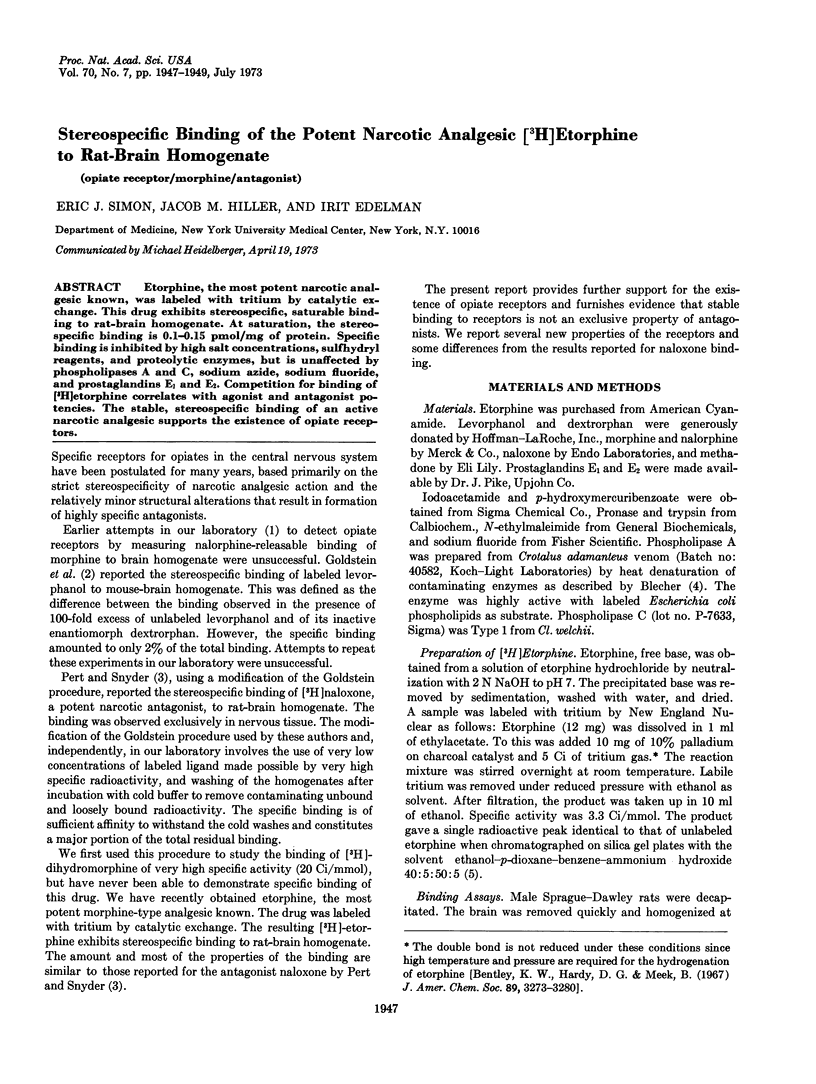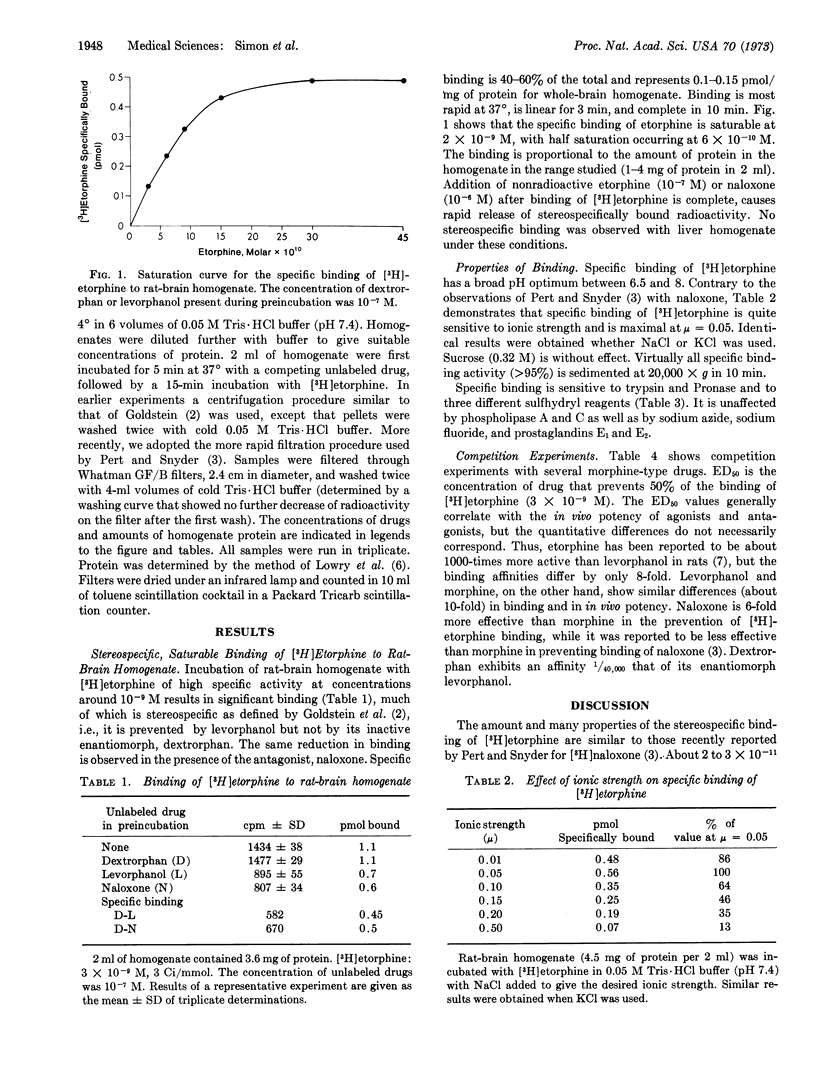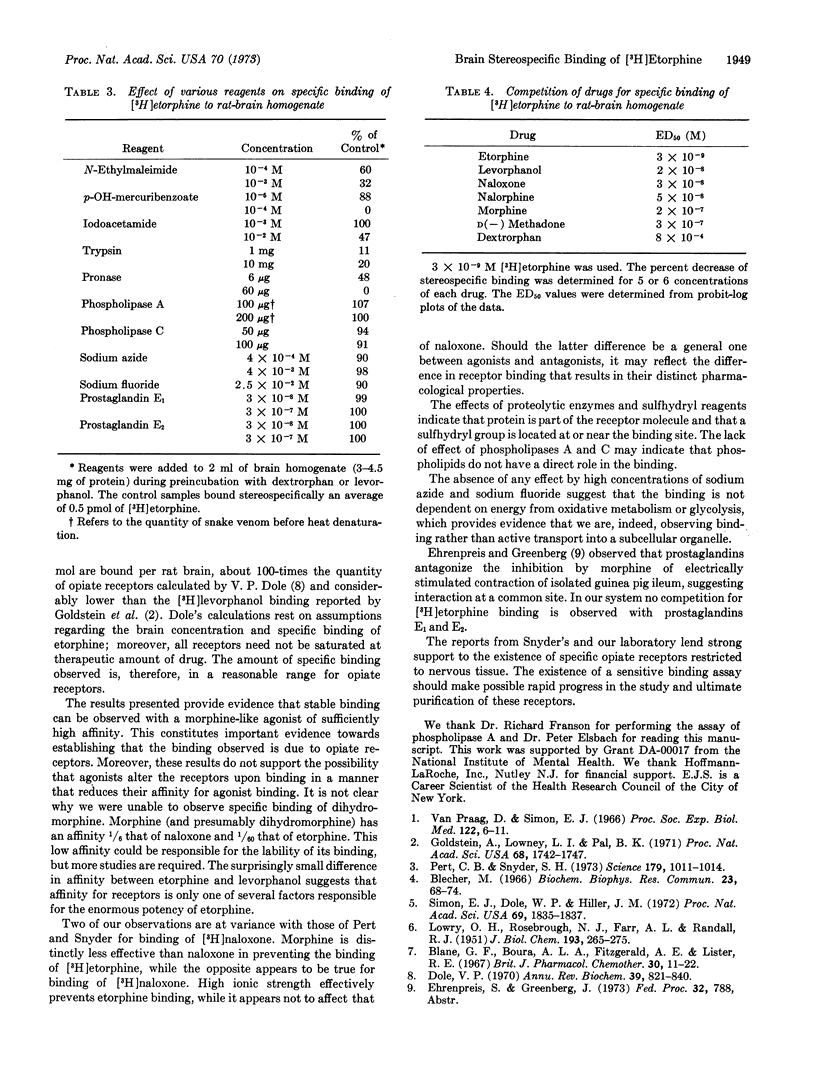Abstract
Etorphine, the most potent narcotic analgesic known, was labeled with tritium by catalytic exchange. This drug exhibits stereospecific, saturable binding to rat-brain homogenate. At saturation, the stereospecific binding is 0.1-0.15 pmol/mg of protein. Specific binding is inhibited high salt concentrations, sulfhydryl reagents, and proteolytic enzymes, but is unaffected by phospholipases A and C, sodium azide, sodium fluoride, and prostaglandins E1 and E2. Competition for binding of [3H]etorphine correlates with agonist and antagonist potencies. The stable, stereospecific binding of an active narcotic analgesic supports the existence of opiate receptors.
Keywords: opiate receptor, morphine, antagonist
Full text
PDF


Selected References
These references are in PubMed. This may not be the complete list of references from this article.
- Blane G. F., Boura A. L., Fitzgerald A. E., Lister R. E. Actions of etorphine hydrochloride, (M99): a potent morphine-like agent. Br J Pharmacol Chemother. 1967 May;30(1):11–22. doi: 10.1111/j.1476-5381.1967.tb02108.x. [DOI] [PMC free article] [PubMed] [Google Scholar]
- Blecher M. On the mechanism of action of phospholipase A and insulin on glucose entry into free adipose cells. Biochem Biophys Res Commun. 1966 Apr 6;23(1):68–74. doi: 10.1016/0006-291x(66)90270-1. [DOI] [PubMed] [Google Scholar]
- Dole V. P. Biochemistry of addiction. Annu Rev Biochem. 1970;39:821–840. doi: 10.1146/annurev.bi.39.070170.004133. [DOI] [PubMed] [Google Scholar]
- Goldstein A., Lowney L. I., Pal B. K. Stereospecific and nonspecific interactions of the morphine congener levorphanol in subcellular fractions of mouse brain. Proc Natl Acad Sci U S A. 1971 Aug;68(8):1742–1747. doi: 10.1073/pnas.68.8.1742. [DOI] [PMC free article] [PubMed] [Google Scholar]
- LOWRY O. H., ROSEBROUGH N. J., FARR A. L., RANDALL R. J. Protein measurement with the Folin phenol reagent. J Biol Chem. 1951 Nov;193(1):265–275. [PubMed] [Google Scholar]
- Pert C. B., Snyder S. H. Opiate receptor: demonstration in nervous tissue. Science. 1973 Mar 9;179(4077):1011–1014. doi: 10.1126/science.179.4077.1011. [DOI] [PubMed] [Google Scholar]
- Simon E. J., Dole W. P., Hiller J. M. Coupling of a new, active morphine derivative to sepharose for affinity chromatography. Proc Natl Acad Sci U S A. 1972 Jul;69(7):1835–1837. doi: 10.1073/pnas.69.7.1835. [DOI] [PMC free article] [PubMed] [Google Scholar]
- Van Praag D., Simon E. J. Studies on the intracellular distribution and tissue binding of dihydromorphine-7,8-H3 in the rat. Proc Soc Exp Biol Med. 1966 May;122(1):6–11. doi: 10.3181/00379727-122-31036. [DOI] [PubMed] [Google Scholar]


